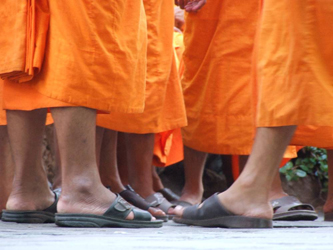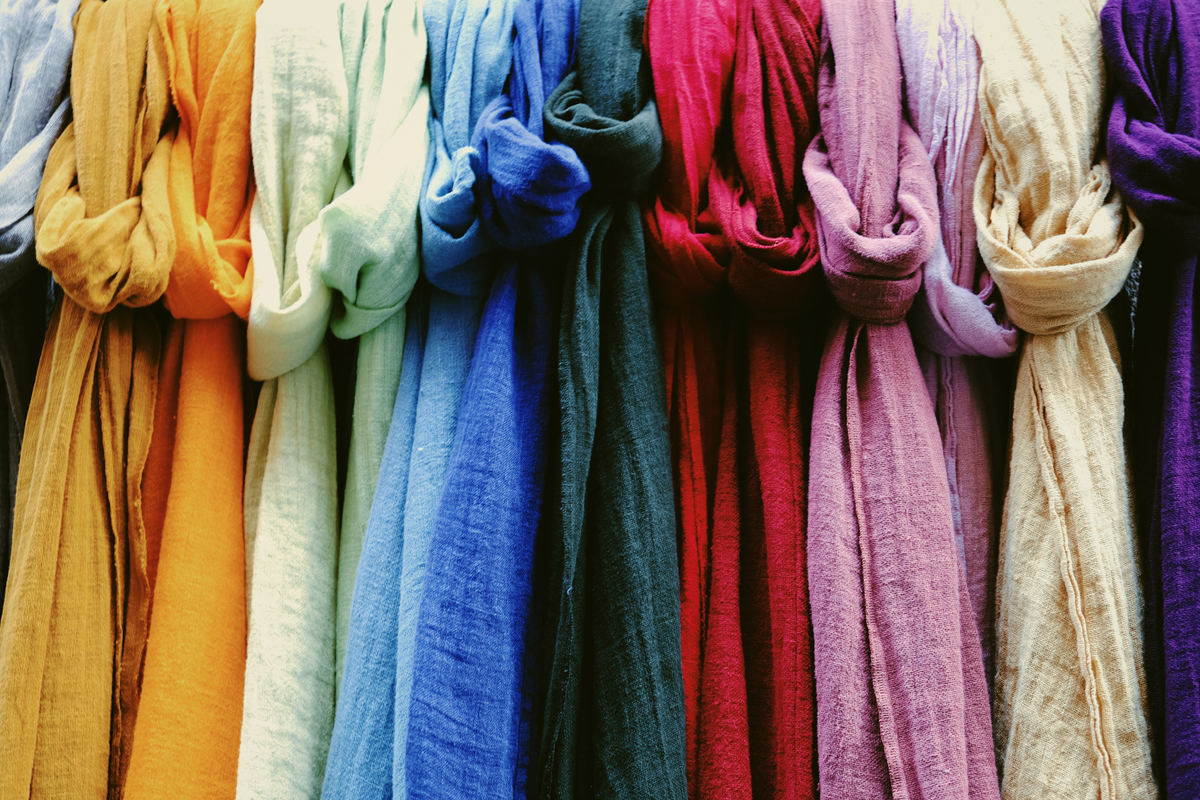Natural Dye Techniques by Buddhist Monks

Have you ever wondered why the robes worn by the Buddhist monk’s were yellow or orange? How did they choose and dye the materials they have? Have you ever wanted to dye cloth similar to the Buddhist ideal?
The Man, who would become Buddha, was born a son of the Shakya clan and grew to manhood in an entitled and sheltered life during the 6th century BCE in India. Early encounters with sickness, old age and death shattered his complacency and made him question the privileged experiences and assumptions of his life. He renounced home and family in order to devote himself to answering the questions of suffering and, as was the custom, traded his fine clothing away for that of a mendicant seeker.
Legend dictates the original robe used by Buddha was actually made from many scraps of cloth sewn together. It was sewn into the pattern of the paddy fields of Magadha in the Northern part of India. This has changed over the years, today’s Buddhist disciples must wear the robe, always look neat and well covered.
According to Buddhist’s regulations set down in the monk’s book of discipline, their robes must be naturally dyed and made. There should be no whites or bright colors, but there is no specific color choice. Early Buddhist religious authorities have interpreted the instructions that the robe, when made, should be dyed a color between yellow and red. Every Buddhist sect around the world has different colored robes due to the different indigenous plants used to dye them. For example, the dull yellow color often used on the streets of Bangkok, and elsewhere in Thailand, are used by the Buddhist monks of Thailand because it is a tone achieved from the heartwood of the indigenous Jack-fruit tree.
To achieve any natural Buddhist inspired color, you would first prepare the robe placing it in a vat of hot or cold water with a solution made from a concoction of cow dung, red earth, or selected plant parts i.e.: root, bark, wood, flowers.
– To achieve a dull yellow, the jack-wood tree is cut into slices and boiled in water until the solution is dark brown in color. The wetted robe is then placed in the second solution, and left there until the desired ‘dirty’ yellow pigment is achieved.
– To achieve a warm orange, you would use the Sindurey plant of Nepal, or roucou and annatto seeds.
– Hues of reds are achieved with yellow raspberry plants or rambai wood, and annatto seeds.
It is important to note, these plant origins may be difficult to find in our Western world. Many of the plants we in North America can use are found as weeds. These weeds can be found anywhere, along roadways, fields, woods and forests. It is best to bring a plant reference guide to find the proper plant for the dye color required.
– Yellows: Scotch broom, saffron and safflower.
– Yellow-tan: Agrimony, goldenrod and sumac
– Yellow-gold: Smartweed, privet, marigold and St. John’s wort
– Greenish-yellow: Lily of the valley and nettle
– Tans: Lichen
– Dark brown: Black walnut
– Orange: Black oak, onion
– Gray: Blackberry and butternut hulls
The Author:
Visit Janestaffordtextiles.com for a wide selection of Dyes, Weaving Looms and Fibres.








